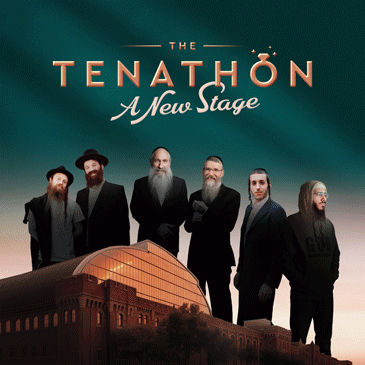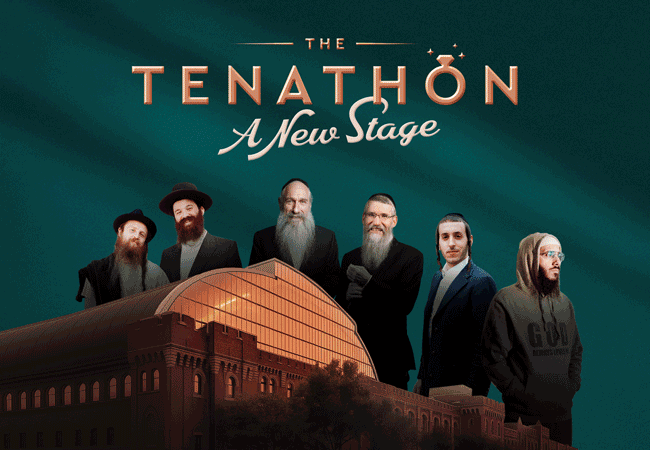Alaska has never had a permanent traditional Jewish rabbi. Today, Rabbi Yosef Greenberg and his wife, Esther (Estie), of the Anchorage Lubavitch Jewish center have pledged themselves to Alaska’s people, and to the memorializing of Alaska Jewish history as preserved in a proposed museum.
Rabbi Yosef Greenberg shares Alaska’s rich Jewish heritage
FAIRBANKS, AK — Jewish connections with Alaska from its beginning were critical. In a series focusing on Jewish Alaskan history, Perry Green, Master Furrier of Alaska (September 2nd 2007), Meta Bloom Buttnick (June 29th, 2008), Judge Andrew Kleinfeld (September 28th, 2008) and Professor Judith Kleinfeld (October 5th, 2008) have been presented. The story of Rabbi Greenberg of the Orthodox Chabad-Lubavitch Center/Alaska Jewish Museum in Anchorage concludes the series.
Alaska has never had a permanent traditional Jewish rabbi. Today, Rabbi Yosef Greenberg and his wife, Esther (Estie), of the Anchorage Lubavitch Jewish center have pledged themselves to Alaska’s people, and to the memorializing of Alaska Jewish history as preserved in a proposed museum.
In his Anchorage home recently, Rabbi Greenberg shared the story of his roots, an overview of Jewish history and its relevance to the Last Frontier.
He explained that in the late 1600s in Russia, Poland and Ukraine, Hasidism began as a spiritual response to Judaism’s intellectual over-emphasis. Some would say Hasidism saved Judaism. At that time, the average, poor, uneducated, hard working Jew had no time to study the Talmud. Consequently the vast majority of Jews felt alienated from Judaism. Rabbi Israel ben Eliezer (1698–1760), the Ba’al Shem Tov, called “the Besht,” taught that regardless of background every human was of great value.
Before World War II, Rabbi Greenberg’s grandfather studied Hitler’s writings.
“Any Jew who was a reader knew what was coming with Hitler’s rise to power,” he said. “But no one expected World War II to be as bad as it was. The Holocaust however clearly demonstrated to all how far racism, anti Semitism, could go.
“During World War II under fire,” he continued, “my maternal grandfather, Rabbi Aaron Hazan, fled Ukraine to Tashkent in Uzbekistan. My paternal grandparents fled Bucharest, Rumania to Tashkent as well. Because the war destroyed all the crops my paternal grandparents starved to death there but all their children, including my father, Moshe Greenberg, survived.”
After the war, Rabbi Greenberg’s family tried to reach Israel. However due to Stalin’s persecution of Polish Jews and the subsequent deluge of people trying to get out, the exit was slammed shut. With no other choice, and hoping to evade persecution, Greenberg’s family went to Moscow trying to blend into anonymity. For the next 25 years in Russia Moshe Greenberg supported his wife Devorah and their children as a diamond cutter. In 1964, Rabbi Greenberg was born just before his grandparents left for Israel, followed soon after by Greenberg’s own family. Near Tel Aviv, Moshe Greenberg managed a diamond cutting factory and taught the skill to Russian refugees.
After the Holocaust, a debate arose among Jewish sages. Some Hasidics wanted to just build a wall around what remained of Judaism, to make sure those souls didn’t fall away.
“Not only had many Jews been killed but those who survived,” the Rabbi pointed out, “were uprooted from their communities. As a result millions of Jews left Judaism. That vast defection was primarily because the Jewish infrastructure had been destroyed.”
However the man who became the post Holocaust leader of world Jewry Menachem Mendel Schneerson, “Rebbe,” had a different message than isolation. Teaching from Brooklyn, New York, Lubavitcher Rebbe Rabbi Schneerson believed survivors had been spared for a reason, to rebuild Jewish infrastructure from the ashes of the Holocaust. Rather than making a new kind of ghetto, he encouraged young couples to go wherever Judaism needed rebuilding, strengthening and bridging to the local community.
“When I was only 17, I came to the United States to study for 10 years, sitting weekly under this great sage, the Rebbe” Rabbi Greenberg continued. “His Chabad Lubavitch Hasidic vision for Jewish revitalization meant for us, young couples, leaving our family and comfort zone and becoming an answer to the Holocaust.”
“There are about 4000 couples like me and Estie working to strengthen Judaism. Every major town in the world has a couple like us,” he said. “A classmate of mine, Rabbi Lazal, went to Marina district in Moscow two years before I came to Alaska. According to his estimate, there are about 2 million Jews in Russia today. Where my sister and her husband went in Odessa alone, there are about 40-45,000 Jews.”
The first 5-7 years were very hard for them. But global Jewry, he said, “was fascinated by the rebirth of Judaism in Russia, and has poured in millions of dollars.”
“The local population and its wealth began to emerge. Today my classmate in Moscow has 300 rabbis under him and an operating budget of 70 million dollars a year!” he smiled. “Russia is the 3rd largest Jewish population in the world after Israel and America. After the holocaust and 75 years of communism to rebuild Judaism in Russia is the greatest miracle!”
During 1983-1984, Greenberg studied at a small rabbinical Seattle college headed by Rabbi Levitin who had long time contacts with the Alaska Jewish community. In response to the Anchorage Jewish community in 1990, the Greenbergs moved permanently to Anchorage. Rabbi Greenberg estimated there are about 6000 Jews in Alaska, located mostly in Anchorage, Fairbanks, and Juneau, adding, “from the beginning Jews were extremely significant in Alaska starting with the early San Francisco Jewish fur traders, Lewis Gerstle and Louis Sloss who urged Secretary of State, William Seward to purchase Alaska.”
“There are many Jewish Alaskan stories that would be included in the Alaska Jewish Historical Museum and Community Center including that of Dan Cuddy, president of Alaska National Bank, born and raised in Alaska,” Greenberg said. “As a World War II veteran, he was among those who first liberated Germany and visited Buchenwald. He saw the concentration camps first hand! No one knows Alaska Jewish history, because there has been no museum to bring it to light. The museum will further promote the spirit of pluralism here. As contrasted with the lessons of historic Russian oppression, Alaska’s open society welcomes ethnic diversity, critical to a frontier of diverse cultures.” Judy Ferguson is a publisher and freelance writer, the author of Alaska histories “Parallel Destinies,” “Blue Hills” and children’s books, “Alaska’s Secret Door,” “Alaska’s Little Chief” and “Alaska’s First People.” In 2009, expect Ferguson’s Salute to Statehood, “Bridges to Statehood, the Alaska Yugoslav Connection.” Please see: www.alaska-highway.org/delta/outpost/
















und losverdienen
You actually make it seem really easy along with your presentation but I to find this topic to be actually something that I think I’d by no means understand. It seems too complex and very vast for me. I am having a look ahead on your next submit, I’ll try to get the cling of it!